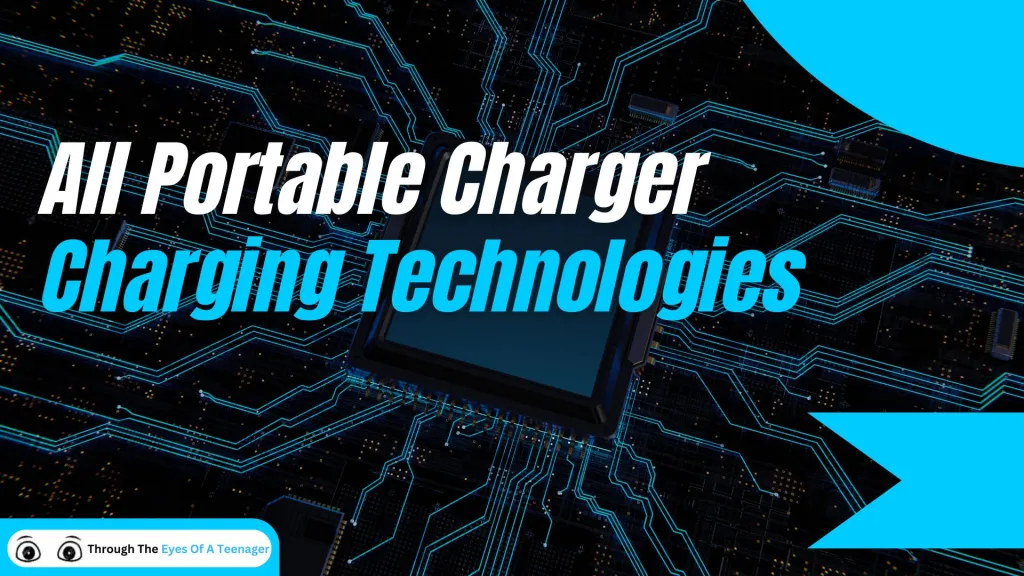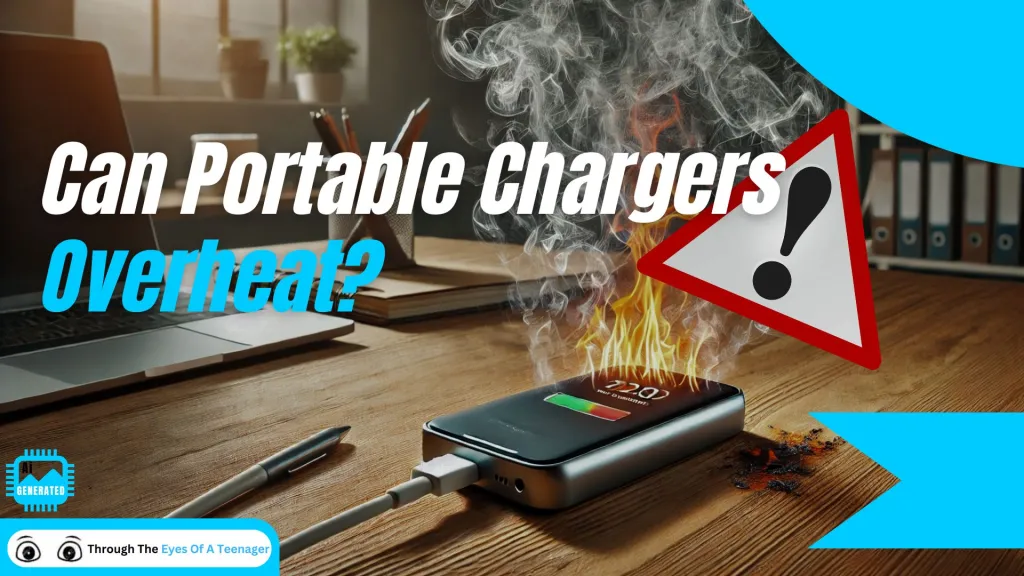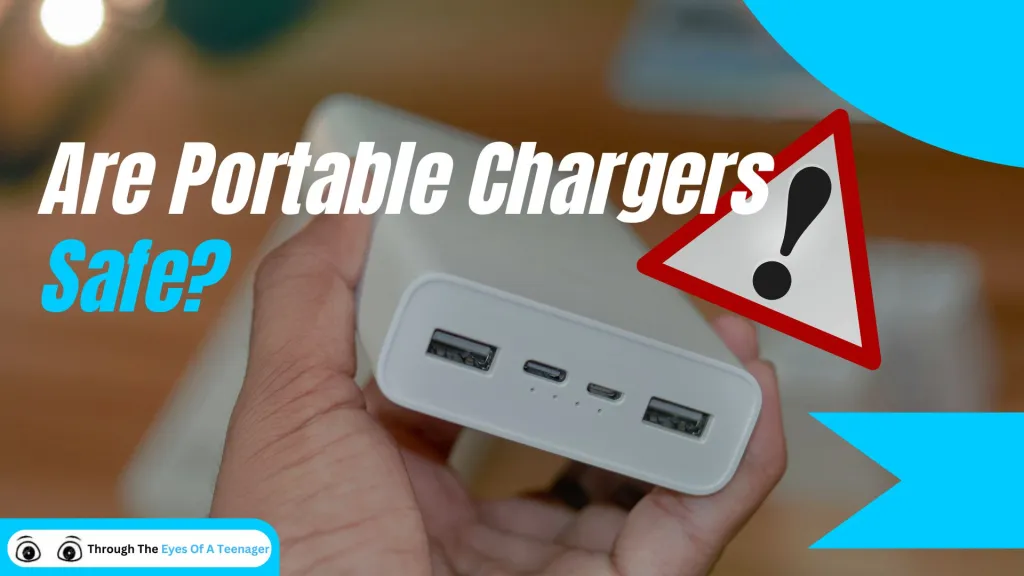Is your microphone giving you the silent treatment again? Well, you’re not alone—around 68% of Windows users deal with microphone issues at least once a year.
nnnnWhether you’re trying to hop on a Zoom call, join a gaming session, or record a podcast with your friends. A broken mic can throw everything off. However, don’t worry, I’ve got your back with some quick fixes that’ll have you up and running in no time.
nnnnIn this guide, I’ll walk you through 10 easy solutions that work on both Windows 10 and 11. From checking your sound settings to updating drivers, we’re covering everything you need to know to get your microphone working again.
nnnnWhat to keep in mind:
nnnn- n
- Check your hardware: Before diving into fixes, ensure your mic is plugged in correctly. You can test it on another device to rule out any hardware issues. nnnn
- Verify your settings: Double-check that your microphone isn’t muted or disabled in your Windows sound settings. It’s a common mistake that can easily be overlooked. nnnn
- Watch for app conflicts: Some apps can sometimes take control of your mic settings. So it’s important to ensure the right permissions are set for the app you’re using. n
Helpfull article:
nnnn4 Easy Methods to Fix Wifi Connection Issues on laptop Windows 10
nnnnIf you’re having trouble connecting to your WiFi network, here are 4 easy fixes for Windows 10 users. First, check for simple issues like… Read more
Best latest article:
nnnnnTable of Contents:
n- n
- 01 Check Your Microphone Connection n
- 02 Update or Reinstall Audio Drivers n
- 03 Run the Windows Troubleshooter n
- 04 Adjust Microphone Privacy Settings n
- 05 Configure Microphone Settings in Windows n
- 06 Check App-Specific Microphone Settings n
- 07 Disable Audio Enhancements n
- 08 Update Windows to the Latest Version n
- 09 Perform a System Restore n
- 10 Use the Windows Recording Audio Troubleshooter n
- 11 FAQ’s n
1. Check Your Microphone Connection
nnnnIf your microphone isn’t working, the problem could be as simple as a loose connection or damaged cable. Whether you’re using a USB mic or a headset with a 3.5mm jack, checking the physical setup is a quick and easy first step to troubleshooting your issue. Here’s a step-by-step guide to verify and fix physical connection issues for your microphone.
nnnnImportant tip:
nnnnAlways make sure to handle your microphone and cables with care. Avoid pulling or twisting the cables too harshly, as this can lead to long-term damage that may not be easily fixable. Keeping your gear in good condition is key to preventing future connection problems!
nSteps to Verify and Fix Physical Microphone Connections:
nnnn- n
- Verify Physical Connections (USB, 3.5mm jack):n
- n
- Make sure your microphone is properly connected. If you’re using a USB mic, check that it’s fully plugged into your computer’s USB port. For headsets with a 3.5mm jack, confirm the cable is firmly inserted into the audio jack on your PC. A loose connection can be the main reason your mic isn’t working. n
nnnn - Try Different USB Ports or Audio Jacks:n
- n
- If your microphone still isn’t working, try connecting it to a different USB port or audio jack. Sometimes ports can become faulty, and simply switching to another one could resolve the issue instantly. This is especially useful for USB microphones, as different ports can have varying power outputs. n
nnnn - Inspect Cables for Damage or Wear:n
- n
- Examine your microphone cables for any signs of damage, like fraying or exposed wires. Even small bends or tears in the cable can disrupt your mic’s performance. If you notice any damage, it might be time to replace the cable or the mic itself. Keeping an eye on cable health can save you from long-term microphone problems. n
n

By following these steps, you can quickly troubleshoot and resolve common microphone connection issues on your Windows device. Ensuring your microphone is physically connected properly, testing different ports, and inspecting for any cable damage can often solve the problem before diving into more complicated fixes. If none of these steps work, you might need to explore driver updates or system settings to further diagnose the issue.
n2. Update or Reinstall Audio Drivers
nnnnIf your microphone still isn’t working, the issue could be tied to outdated or malfunctioning audio drivers. Whether it’s due to a recent Windows update or something like a driver conflict. Updating or reinstalling drivers can often solve the problem. So here’s a step-by-step guide to help you access and refresh your audio drivers.
nnnnSteps to Update or Reinstall Audio Drivers:
nnnn- n
- Access Device Manager to Update Drivers:n
- n
- Start by opening the Device Manager on your Windows PC. You can do this by pressing Windows + X and selecting Device Manager from the menu. Once there, look out for Audio inputs and outputs, then find your microphone, and right-click on it. Then, select Update driver. After this, Windows will search for and install any available updates for your microphone’s driver. n
n

- n
- Uninstall and Reinstall Audio Drivers:n
- n
- If updating your drivers doesn’t fix the problem, you may need to completely reinstall the driver. In Device Manager, right-click your microphone and select Uninstall device. After that, restart your computer. When your PC boots up again, Windows will automatically reinstall the audio drivers. Which will potentially resolve any conflicts that were affecting your microphone. n
n

- n
- Use Windows Update to Find Latest Driver Versions:n
- n
- Sometimes, your system’s drivers may need to be updated via Windows itself. Go to Settings > Update & Security > Windows Update and click on Check for updates. If there are any updates available, including audio drivers, install them and restart your computer. Keeping your system updated ensures that all drivers are current and might just resolve your microphone issues. n
n

Important tip:
nnnnAfter updating or reinstalling drivers, always restart your computer to allow the changes to happen. This helps ensure that the new drivers are properly loaded and functioning correctly. If the problem persists, you may want to explore third-party driver update tools to find drivers that Windows might have missed!
nBy following these steps, you can tackle microphone issues related to drivers and improve your overall system performance. However, if you’re still having trouble, it may be time to explore other solutions. Consider adjusting settings or checking for hardware problems.
n3. Run the Windows Troubleshooter
nnnnIf your microphone still just wont work, running the built-in audio troubleshooter on Windows might be the solution. It is a quick and easy way to identify and fix common issues. The troubleshooter can help diagnose problems with your microphone. It can detect misconfigurations and it can also apply fixes automatically without you having to dive into complex settings. Here’s how you can use it to get your microphone back on track.
nnnnSteps to Run the Audio Troubleshooter:
nnnn- n
- Locate and Run the Audio Troubleshooter:n
- n
- To get started, go to Settings by pressing Windows + I. Then, navigate to System > Sound. Scroll down to the Advanced sound options section and click on Troubleshoot. This will launch the audio troubleshooter, which is designed to detect and fix common microphone problems on your system. n
n

- n
- Follow On-Screen Instructions to Diagnose Issues:n
- n
- Once the troubleshooter is open, it will guide you through a series of on-screen instructions. Be sure to answer the prompts accurately as this will be important to find the issue. The prompts will be stuff like selecting your microphone device or confirming the type of problem you’re experiencing. After you’ve done that, the tool will analyze your system for issues. It will provide helpful suggestions about what the problem may be. n
nnnn - Apply Suggested Fixes Automatically:n
- n
- If the trouble-shooter detects any issues, it will offer you a list of suggested fixes. You can choose to apply these fixes automatically, which may include resetting settings or reinstalling drivers. Once the fixes are applied, you can test your microphone again to see if the issue has been solved. n
n
Important tip:
nnnnIf the troubleshooter still doesn’t fix the problem, you can try running it a few more times. Or you can also restart your PC before trying other solutions. Sometimes the audio troubleshooter needs a fresh start to properly resolve issues. It’s a great first step before moving on to more manual fixes like updating drivers or adjusting settings.
nBy using the audio troubleshooter, you can quickly narrow down microphone issues and apply fixes with ease. However, if the problem persists, you may need to explore more in-depth solutions. Though, this tool is a great starting point for most common microphone problems.
n4. Adjust Microphone Privacy Settings
nnnnIf your microphone still isn’t working, the solution might be in your privacy settings. Windows allows you to control which apps have access to your microphone which can come in very handy. However, if permissions are restricted, your mic won’t work properly. Adjusting these settings is quick and easy, and could be the key to solving your microphone problems. Here’s a step-by-step guide to review and update your privacy settings for the mic.
nnnnImportant tip:
nnnnAlways double-check app permissions after installing new software. Sometimes Windows blocks microphone access by default. So reviewing your privacy settings after every new install can prevent microphone problems from cropping up unexpectedly.
nSteps to Adjust Microphone Privacy Settings:
nnnn- n
- Navigate to Windows Privacy Settings:n
- n
- First, open Settings by pressing Windows + I, then go to Privacy on the left sidebar. Then, scroll down to Microphone under the App permissions section. This will show you the microphone privacy settings where you can manage which app can access your mic. n
n

- n
- Enable Microphone Access for desired Apps:n
- n
- In the Microphone settings page, make sure the toggle under Allow apps to access your microphone is turned on. If this option is disabled, no apps will be able to use your microphone, which is probably causing the issue. Once this is enabled, apps will be able to access your microphone, depending on individual permissions. n
nnnn - Review App Permissions Individually:n
- n
- Scroll down to the list of apps and check which ones have permission to use your microphone. You can toggle microphone access on or off for each app individually. If the app you’re trying to use is blocked, simply turn the permission on and try again. This is especially important for apps like Zoom, Discord, or Skype, which need mic access to function properly. n
n
By adjusting your privacy settings, you can quickly solve issues related to microphone access. If your microphone is still not working after reviewing permissions. Then you might need to explore driver updates or hardware troubleshooting as demonstrated in the next steps.
n5. Configure Microphone Settings in Windows
nnnnIf your microphone still isn’t working correctly, it could be because of some incorrect sound settings. Accessing your sound settings in the Control Panel allows you to adjust the default recording device and fine-tune your mic’s boost and levels. This can often solve audio issues and improve microphone performance. Here’s a step-by-step guide to help you make these adjustments.
nnnnSteps to Adjust Microphone Sound Settings:
nnnn- n
- Access Sound Settings in Control Panel:n
- n
- Start by opening the Control Panel on your Windows PC. You can do this by typing “Control Panel” in the search bar. Once your inside, navigate to Hardware and Sound and then click on Sound. In the pop-up window, go to the Recording tab, where you’ll find your microphone listed along with other audio devices. n
n

- n
- Set Default Recording Device:n
- n
- In the Recording tab, locate your microphone in the list of devices. Right-click on it and select Set as Default Device. This ensures that Windows uses your microphone as the default for all recording and communication purposes. If you have multiple microphones connected, setting the correct one as the default is crucial for apps like Zoom or Discord to work properly. n
n

- n
- Adjust Microphone Boost and Levels:n
- n
- To fine-tune your microphone, right-click your mic in the Recording tab and select Properties. In the properties window, go to the Levels tab. Here, you can adjust both the microphone volume and boost. If your microphone is too quiet, increasing the boost may help. However, be careful not to raise it too much, as it can cause background noise or distortion. n
n

Important tip:
nnnnIf you’re still having issues, try lowering or increasing the microphone levels incrementally. As even the smallest adjustments can make a big difference in sound quality. Always test your microphone after making these changes to ensure the levels are well-balanced.
nAccessing the sound settings and adjusting your default recording device and levels is often an easy fix. It’ll often resolve microphone issues and improve sound quality. If the problem persists, you may need to explore further troubleshooting steps like reinstalling drivers or checking physical connections.
n6. Check App-Specific Microphone Settings
nnnnSometimes the issue with your microphone may not be in your system settings but within the communication app itself. Apps like Skype, Discord, and Zoom have their own audio settings that can override your computer’s configuration. Double-checking these settings can often fix the problem fairly quickly. So here’s a guide to help you review and adjust microphone settings in your communication apps.
nnnnSteps to Review and Adjust Microphone Settings in Communication Apps:
nnnn- n
- Review Settings in Communication Apps (Skype, Discord, etc.):n
- n
- Each app has its own audio settings, so start by opening the app you’re using. Go to the Settings or Preferences menu, and then look for the Audio or Voice & Video section. This is where you can configure how the app uses your microphone and headphones. Make sure everything looks correct and kind off matches your system settings. n
nnnn - Ensure Correct Input Device is Selected:n
- n
- In the audio settings of the app, you’ll see a section for Input Device or Microphone. Ensure the correct microphone is selected—this is especially important if you have multiple input devices connected. For example, a headset and a built-in mic. If the wrong device is chosen, the app won’t pick up sound from your preferred microphone. n
nnnn - Test Microphone Within App Settings:n
- n
- Most communication apps allow you to test your microphone directly in the settings. Look for a Test Microphone button or similar option. Speak into your mic, and the app will play back the audio to help you confirm whether it’s working. If you don’t hear anything, try adjusting the mic sensitivity or switching input devices until it works. n
n
Important tip:
nnnnAlways check app settings after installing updates. Some updates can reset audio preferences. Regularly review your settings to avoid unexpected mic issues during important calls or meetings.
nBy doing the steps listed above, you can quickly resolve audio issues without having to mess with system-wide settings. If your mic still doesn’t work, consider troubleshooting other areas like drivers or physical connections. Or keep reading for more methods on how to fix your mic.
n7. Disable Audio Enhancements
nnnnIf the problem still persists, it might be caused by unnecessary audio enhancements that interfere with your sound quality. Disabling these enhancements can help clear up any distortions or glitches in your audio. Here’s how to access your sound device properties and disable audio enhancements to ensure your microphone works as expected. (keep in mind that the following guide is for windows 10 only)
nnnnImportant tip:
nnnnIf you notice any sound distortion or strange effects when using your microphone. Then disabling audio enhancements should be one of the first steps you take. Enhancements may work well for speakers, but they don’t really mix well with mics and can often cause more harm than good.
nSteps to Disable Audio Enhancements:
nnnn- n
- Access Sound Device Properties:n
- n
- First, right-click on the Sound icon in your taskbar and select Sounds. In the window that appears, go to the Recording tab. Then find your microphone from the list of devices, right-click on it, and choose Properties. This will take you to the device settings where you can make adjustments specific to your mic. n
n

- n
- Navigate to the Enhancements Tab:n
- n
- In your microphone’s properties window, click on the Enhancements tab. This is where various audio enhancements are listed. These can sometimes cause issues like echoes, delays, or poor sound quality when enabled. n
nnnn - Disable All Audio Enhancements:n
- n
- Check the box next to Disable all enhancements or uncheck any individual enhancements that are currently active. Once you’ve disabled them, click Apply and OK to save the changes. Disabling these enhancements can often clear up audio issues and ensure your microphone captures sound without interference. n
n
Disabling audio enhancements through your sound device properties can instantly improve microphone clarity and eliminate unwanted sound effects. If you’re still having trouble, checking other areas like physical connections or app settings. Or try some of the following fixes.
n8. Update Windows to the Latest Version
nnnnKeeping your system up to date is essential for ensuring your microphone works properly. As updates often contain important fixes and improvements for your hardware like for example your mic. Installing the latest Windows updates can resolve bugs that might be causing your microphone to malfunction. Here’s a quick guide to check for and install updates on your Windows device.
nnnnSteps to Update Windows and Fix Microphone Issues:
nnnn- n
- Check for Windows Updates:n
- n
- Start by opening Settings (press Windows + I) and navigate to Update & Security. From there, click on Windows Update on the left sidebar. This will show you if any updates are available for your system. If there are no updates listed, you can manually check by clicking Check for updates. n
n

- n
- Install All Available Updates:n
- n
- If any updates are available, click Download and Install to get the latest versions of the recent important system files. These updates can include fixes for known microphone issues, driver updates, or performance improvements that affect how your mic functions. Make sure to install all updates to keep your system running smoothly. n
nnnn - Restart Your Computer After Updating:n
- n
- Once the updates are installed, restart your computer to apply the changes. This step is crucial because some updates don’t take effect until after a restart. After rebooting, test your microphone to see if the issue has been fixed. n
n
Important tip:
nnnnAlways check for updates regularly. Even if your microphone is working fine, keeping your system up to date is always handy. As it ensures that you won’t run into any new bugs or security vulnerabilities in the future.
nBy checking for and installing Windows updates, you can fix microphone issues and keep your system optimized for peak performance. If the problem persists after updating, you might need to look into driver updates or other hardware-related troubleshooting steps.
n9. Perform a System Restore
nnnnIf your microphone was working fine before but suddenly stopped, a recent change to your system might be the problem. System Restores can help by rolling back your PC to an earlier time when everything was functioning correctly. Here’s how to access System Restore and use it to fix microphone problems.
nnnnImportant tip:
nnnnAlways back up important files before performing a System Restore, as some recent changes may be undone in the process. While it won’t affect personal files, it’s better to be safe, especially if you’ve installed new apps or updates recently.
nSteps to Use System Restore for Fixing Microphone Issues:
nnnn- n
- Access System Restore Through Control Panel:n
- n
- Start by opening the Control Panel on your Windows device (by typing ”control panel” in the Windows search bar”. Then navigate to System and Security, then click on System. On the left-hand side, you’ll see an option for System Protection—click on it. In the new window, choose System Restore. This feature allows you to revert your system to a previous state. Which can often help resolve software issues affecting your microphone. n
n

- n
- Choose a Restore Point Before the Issue Began:n
- n
- Once you access System Restore, you’ll be prompted to choose a restore point. Then you’ll want to select a date and time when your microphone was working fine. This is crucial for ensuring that any recent changes causing the issue are undone. If available, you can check Show more restore points for additional options. n
nnnn - Follow the Wizard to Complete the Restore Process:n
- n
- After selecting the appropriate restore point, follow the on-screen instructions to proceed with the restoration process. The wizard will guide you through the steps and confirm that your system will be braught back to the chosen date. Once the process is complete, your computer will restart. Then, you can test your microphone to see if the problem is resolved. n
n
Using System Restore is a great way to fix microphone issues caused by recent system changes. If the problem persists, you may need to explore other troubleshooting options like checking drivers or updating system settings.
n10. Use the Windows Recording Audio Troubleshooter
nnnnIf your microphone issues persist, downloading and running the Microsoft Recording Audio Troubleshooter might be the solution. It’s a great way to identify and automatically fix common microphone problems. This tool scans for issues and provides recommended fixes to get your mic back on track. Here’s how to use the troubleshooter effectively.
nnnnSteps to Use the Microsoft Recording Audio Troubleshooter:
nnnn- n
- Download the Microsoft Recording Audio Troubleshooter:n
- n
- Start by visiting the Microsoft website and searching for the Recording Audio Troubleshooter tool. Then, just download the file to your PC. Don’t worry, it’s a lightweight tool that’s easy to install and specifically designed to diagnose and resolve microphone-related issues. n
nnnn - Run the Tool and Follow Prompts:n
- n
- Once downloaded, open the tool and click Next to begin the troubleshooting process. The tool will scan your system for any potential issues affecting your microphone. It will prompt you with a series of questions or options based on the detected problems. So be sure to follow the instructions carefully. n
nnnn - Apply Suggested Fixes:n
- n
- After the scan is complete, the tool will suggest possible fixes for the issues it found. Choose to apply the recommended fixes, and the tool will make the necessary adjustments to your system. Once finished, test your microphone to ensure everything is working as expected. n
n
Important tip:
nnnnThe Microsoft troubleshooter is particularly useful for solving issues you might not be able to diagnose manually. If the tool doesn’t resolve your problem, it might still provide clues about deeper system issues. It also might indicate hardware failures that require further action.
nBy downloading and running the Microsoft Recording Audio Troubleshooter, you can quickly address microphone issues with minimal effort. If problems persist, you may need to explore other solutions, like adjusting privacy settings or checking physical connections.
nHow To Fix Microphone Not Working on Windows 10/11 – FAQ’s
nnnnIf your microphone volume is too low, it could be due to incorrect sound levels or microphone boost settings. You can adjust this by going to Control Panel > Sound > Recording tab, selecting your microphone, and clicking on Properties. In the Levels tab, increase the Microphone Boost to raise the volume.
nTo check if your microphone is muted, right-click on the Sound icon in your taskbar, select Sounds, and go to the Recording tab. Click on your microphone and check if the volume slider is set to zero. Also, some headsets have physical mute buttons, so make sure those are not activated.
nStatic or buzzing sounds are often caused by interference, poor-quality cables, or improper grounding. Try using a different microphone or cable to see if that resolves the issue. You can also disable audio enhancements by accessing Sound settings > Properties > Enhancements tab, as they can sometimes create unwanted noise.
n











Are Portable Chargers Safe? Everything You Need to Know in 2024
Discover the truth about portable charger safety in 2024. Learn about potential risks, how to choose safe devices, and essential tips to protect your electronics and yourself. (140 characters)
Can Portable Chargers Charge Laptops in 2024: Everything You Need to Know
Discover how portable chargers can power your laptop on the go. Learn about compatibility, wattage requirements, and top tips for choosing the right portable charger in 2024.
Is a 10,000 mAh Power Bank Good? What You Need to Know in 2024
Discover if a 10,000 mAh power bank is the right choice for your charging needs. Learn about capacity, charging capabilities, portability, and how to choose the perfect portable charger.
Power Bank vs. Portable Charger: Understanding the Key Differences in 2024
Confused about power banks and portable chargers? Discover the essential differences, features, and which device is right for your charging needs in our comprehensive guide.
How Many Watts Do I Need to Charge My Laptop? Power Requirements Guide 2024
Discover exactly how many watts your laptop needs to charge properly. Learn about power requirements, charger compatibility, and how to choose the right wattage for your device in 2024.